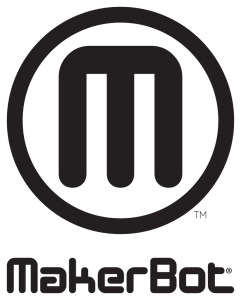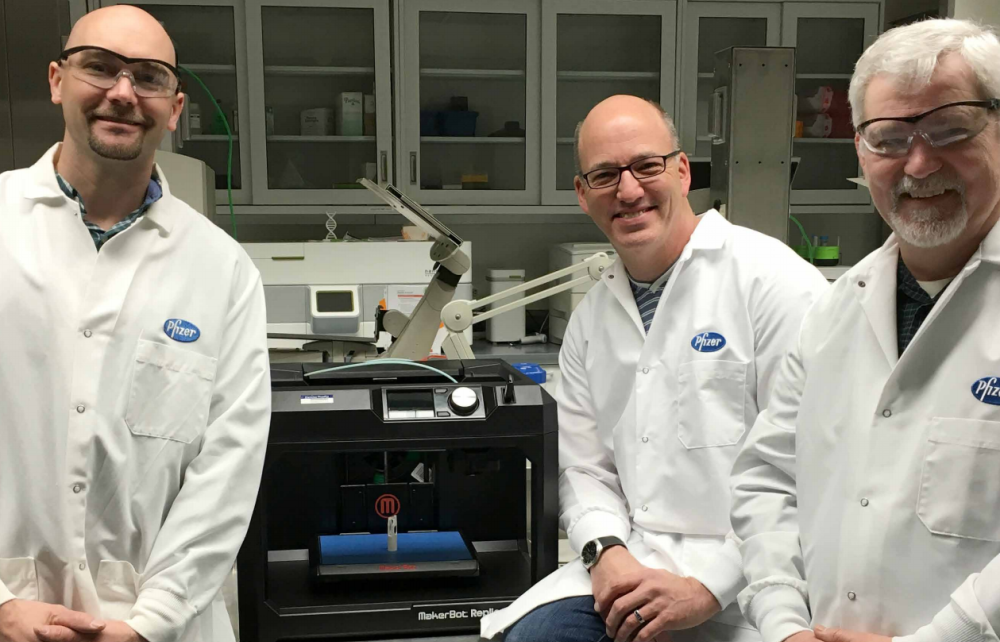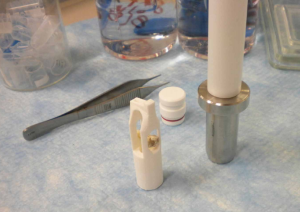 I have a sort of fascination with what most people would consider mundane uses for 3D printing. You show me some 3D printed knobs for a stove or a 3D printed clip for a backpack and I want to know everything about it. It isn’t so much that mundane things are especially interesting to me, but when 3D printing is used for things that seem simple or boring, I think it reveals what is truly amazing about the technology. Just like anyone, I’m excited when I read about 3D printed components finding their way into rockets, the latest Hollywood blockbusters making magic with 3D printed costumes and props and cosplayers recreating that Hollywood magic. But the real potential of 3D printing isn’t big and flashy, or really even all that exciting. No, the real potential is when it is used as a tool in service of making something else that can be called amazing.
I have a sort of fascination with what most people would consider mundane uses for 3D printing. You show me some 3D printed knobs for a stove or a 3D printed clip for a backpack and I want to know everything about it. It isn’t so much that mundane things are especially interesting to me, but when 3D printing is used for things that seem simple or boring, I think it reveals what is truly amazing about the technology. Just like anyone, I’m excited when I read about 3D printed components finding their way into rockets, the latest Hollywood blockbusters making magic with 3D printed costumes and props and cosplayers recreating that Hollywood magic. But the real potential of 3D printing isn’t big and flashy, or really even all that exciting. No, the real potential is when it is used as a tool in service of making something else that can be called amazing.
I think it would be mathematically impossible to find someone who hasn’t used a product developed by Pfizer. As one of the largest global pharmaceutical corporations they have developed everything from common over the counter medications to highly specialized, life-saving medical treatments. If you’ve taken Advil, Centrum, Lyrica, Zoloft, Celebrex, or used an EpiPen then you’ve used a Pfizer product. The development of drugs and medications are some of the most tightly regulated industries in the world, so making mistakes is something that is really frowned upon and any research into the development of pharmaceuticals is both exacting and extremely controlled.
Laboratories that are developing the next generation of life-saving drugs probably isn’t the first place that you would expect to find a 3D printer. but it turns out that Pfizer Global Research and Development scientists David Zakur and Edwin Berryman relied heavily on a MakerBot to help them research and test a new line of osteo and rheumatoid arthritis medications. The pair work in Pfizer’s Comparative Medicine Department working on new treatments for diseases that affect bones, cartilage and joints, like arthritis. There are over one hundred different varieties of arthritis that affect 350 million people in the world, almost forty million of them in the United States alone.
As the world’s populations start to live longer, the numbers of people who suffer from arthritis are only expected to increase, and there is a growing demand for treatments and medications. The research being done by Zakur and Berryman requires them to test various treatments on 1.5-centimeter-long arthritic rat bones to see how they react. It is an important early step in the development cycle of a new drug, and a requirement before human trials can be approved. In order to track the reactions in the rat bones, they need to obtain very high resolution scans of the cartilage tissue. The problem is, in order to accurately track the reactions, every single sample bone needs to be in the exact same position when it is scanned a second time after being exposed to a special dye that will reveal data about the effects of the treatment.
It turns out that making sure the bones are in the same position isn’t especially easy, especially when the bone being worked with is a tiny rat bone. In order to keep the two scans consistent, Zakur and Berryman needed a specialized brace that would hold it in the exact same position. Unfortunately their budget simply didn’t include the thousands of dollars that would have been required to design and manufacture these braces. But fellow Pfizer scientist Tim Winton happened to have a MakerBot Replicator 5th Gen and was able to help them design and 3D print a bone holder that would keep the bone samples steady enough to be accurately scanned both times. The 3D printed bone holder reduced the scanning time by over an hour, and virtually eliminated the need to retest samples.
“Once the final design was complete we needed to print numerous holders. The Replicator’s consistency was showcased again by delivering exact duplications of the holders from print to print,” Winston explained.
Not only did the new 3D printed bone holders allow Zakur and Berryman to ensure that their scan data would be as accurate as possible, they actually ended up streamlining the entire process. Not having to carefully place the samples, verify that they matched up with previous scans and then rescan anything that wasn’t exact enough ended up saving them a ton of time. Additionally, even more time was saved because before the 3D printed bone holder they would need to take over 500 scans in order to obtain 100 viable ones. By using a MakerBot, not only was the research collected faster and with more efficiency, but it eliminated outsourcing costs and ended up actually boosting the accuracy of their research, which you can read more about here. Discuss in the 3D Printed Bone Holder forum over at 3DPB.com.
Subscribe to Our Email Newsletter
Stay up-to-date on all the latest news from the 3D printing industry and receive information and offers from third party vendors.
You May Also Like
3D Printing Financials: Fathom Struggles in Financial Quicksand During Critical Transition
Facing a year of key transitions and financial pressures, Fathom (Nasdaq: FTHM) has filed its annual report for 2023 with the U.S. Securities and Exchange Commission (SEC). The document outlines...
Latest Earnings Overview for Australian 3D Printing Firms Titomic and AML3D
Australian 3D printing manufacturing firms Titomic (ASX: TTT) and AML3D (ASX: AL3) reported their financial results for the period from July to December 2023, marking the first half of their...
3D Printing Webinar and Event Roundup: April 7, 2024
Webinars and events in the 3D printing industry are picking back up this week! Sea-Air-Space is coming to Maryland, and SAE International is sponsoring a 3D Systems webinar about 3D...
3D Printing Financials: Unpacking Farsoon and BLT’s 2023 Performance
In the Chinese 3D printing industry, two companies, Farsoon (SHA: 688433) and Bright Laser Technologies, or BLT (SHA: 688333), have recently unveiled their full-year earnings for 2023. Farsoon reported increases...

































